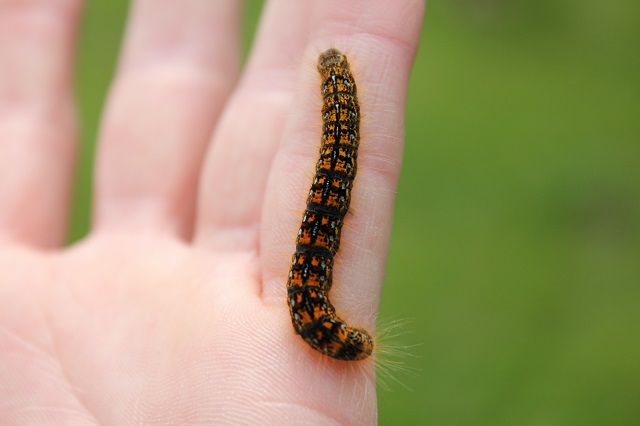Last Christmas my son, a school principal in Miami, announced that when the apocalypse came, he and his family would seek refuge in Indiana with us, where we have water, gardens, solar power, and relative isolation from climate and health catastrophes that plague the coasts.
He said it as a joke, unaware that within three months they would indeed drive seventeen hours to our doorstep, and remain throughout spring and most of summer.
Like many adults unprepared for swift, sweeping changes, and suddenly bereft of childcare, he and his wife saw moving home as their best option. They arrived a few days after the world began to shelter in place with their four-year-old daughter Soraya and another girl in utero, and then scrambled to lead, through our slow rural internet connection, the staffs of their two newly founded low-income Miami public schools through the precipitous transformation to distance learning. They placed themselves and Soraya in our care from March until late August when, after returning to Miami, moving to a larger apartment, having the baby, and starting parental leave, they would be ready to homeschool her until the crisis in Florida passed.
Soraya had already received a rich world of experiences in Miami with bilingual preschool, swimming lessons, friends, and books. But here her universe swiftly expanded. Except for a couple weeks splashing in puddles and chasing butterflies last summer, my granddaughter had been a pure urbanite. So at first she was scared of bugs, hesitant to walk far, terrified of the woods.
But as she spent week after week exploring with us, curiosity overtook her. She learned not only names but also sounds and habits of a couple dozen birds who visited the feeders, strutted through the yard, or foraged in the pond. She told stories about our deer, turkeys, frogs, geese, hawks, and chipmunks. She delighted in a black swallowtail caterpillar nicknamed “Jerry,” who chomped on our parsley. She sowed seeds, watered plants, picked blueberries, and learned the garden herbs by smell.
After dark she marveled at fireflies, and before dawn she admired not only the moon but Venus, Jupiter, and Saturn. Her keen eyes noticed spiders in their webs, beetles marching among grass stalks, ants joining every picnic. She sprinted down grassy hills, splashed into the pond, climbed walls and trees, discovered moss, wildflowers, toadstools, and even the occasional snake along woodland paths, and endured bravely the inevitable tick and poison ivy treatments.
Her questions led us to endless YouTube videos: flower pollination and goat midwifery; algae and microscopic pond organisms; the solar system’s composition; human anatomy and evolution. Her vocabulary expanded not only to species of plants and animals but to farm equipment, soil, compost, mulch, and vegetative growth processes.
Her faith grew as well. Mornings she relished watching a gospel choir or singing with her grandfather, and at dinnertime repeating a Taizé song, naming what she was grateful for, choosing which adult would pray, and concluding with a chorus of “Amen.” She increasingly asked questions about God, about Jesus, about creation, about fairness, about skin color, about coronavirus and death, about where she was before birth.
I say all this not to tout my granddaughter’s charm and intelligence (though she is of course amazing), but to underscore what a wonderful world we—parents, grandparents, teachers, pastors—can open to small children living in nature’s arms. Amid adult-sized worries about national and worldwide crises, we assert hope by nurturing our children’s love for creation, and by relearning wonder with them.
Ordinary 23A (September 6, 2020)
- Exodus 12:1-14 (semi-continuous) relates the miracle of Passover, involving a lamb, unleavened bread, and bitter herbs.
- Psalm 119:33-40 prays for loyalty to God’s ways rather than vanity and selfish gain.
- Romans 13:8-14 draws from the daily cycle of night and day to exhort honorable living.
- Matthew 18:15-20 pledges Christ’s presence even when only two gather.
Ordinary 24A (September 13, 2020)
- Exodus 14:19-31 (semi-continous) relates the miracle of the sea’s parting for the Israelites.
- Genesis 50:15-21 expresses Providence’s turning evil intentions into a life-giving outcome.
- Psalm 103:(1-7), 8-13 pictures worshipers’ life renewed like the eagle’s.
- Matthew 18:21-35 relates a story commending forgiveness, since God’s mercy is infinitely greater than any we can offer.
Ordinary 25A (September 20, 2020)
- Exodus 16:2-15 (semi-continuous) tells the story of the manna that fed the Israelites in the wilderness.
- Jonah 3:10-4:11 describes the bush and the worm that taught Jonah a lesson about divine forbearance.
- Psalm 145:1-8 proclaims God’s greatness and goodness to all living creatures.
- Philippians 1:21-30 exhorts making the effort to stand firm in purpose, unintimidated by foes.
- Matthew 20:1-16 describes God’s generosity toward hired laborers, reminding us of the plight of migrants who harvest our food.
Ordinary 26A (September 27, 2020)
- Exodus 17:1-7 (semi-continuous) relates God’s provision of water in the wilderness.
- Ezekiel 18:1-4, 25-32 critically examines the parable, “The parents have eaten sour grapes, and the children’s teeth are set on edge.”
- Psalm 25:1-9 employs the metaphor of “path” to pray for divine guidance.
- Philippians 2:1-13 reminds readers of Jesus’ self-humbling ministry.
- Matthew 21:23-32 teaches that faithful deeds are far more worthy than empty words.
Ordinary 27A (October 4, 2020)
- Exodus 20:1-4, 7-9, 12-20 (semi-continuous) commands worship of God alone, and no other gods or idols, including covetousness.
- Isaiah 5:1-7 laments a human “vineyard” gone awry, filled with injustice despite God’s careful tending.
- Psalm 80:7-15 likewise compares humans to a vineyard planted by God, and pleads for restoration.
- Philippians 3:4b-14 counts all material gain as loss and rubbish compared to faith in Christ.
- Matthew 21:33-46 retells the story of God’s vineyard from another perspective, and counsels producing the fruits of God’s reign.
Ordinary 28A (October 11, 2020)
- Exodus 32:1-14 (semi-continuous) tells of Aaron’s calf, cast from golden jewelry, that the Israelites worshiped at Mount Sinai.
- Isaiah 25:1-9 describes the mountain where God will offer a great feast and wipe tears from all eyes.
- Psalm 23 asserts faith in God’s provident guidance through green pastures, still waters, right paths, and even darkest valleys.
- Philippians 4:1-9 advises relinquishing worry, and instead rejoicing in God, praying always, being guarded by God’s peace, and living by what is true, honorable, and just.
- Matthew 22:1-14 tells the parable of the great wedding banquet, that many were too distracted to attend.
Ordinary 29A (October 18, 2020)
- Exodus 33:12-23 (semi-continuous) promises Moses, “My presence will go with you, and I will give you rest.”
- Isaiah 45:1-7 proclaims that it is the incomparable God who forms light and darkness and creates weal and woe.
- Psalm 96:1-9 (10-13) calls earth, sea, field, and trees to sing before God.
- 1 Thessalonians 1:1-10 describes the community turning from idols to serve a living and true God.
- Matthew 22:15-22 reminds disciples to “give to God the things that are God’s.”
Ordinary 30 (October 25, 2020)
- Deuteronomy 34:1-12 (semi-continuous) tells of the death of Moses, Israel’s incomparable leader, at the border of the promised land.
- Leviticus 19:1-2, 15-18 enjoins, “You shall be holy,” and commends impartial justice, right speech about neighbors, non-violence in business dealings, fair relationships, and forgiveness.
- Psalm 1 envisions followers of Torah as well-watered trees, filled with fruit, prospering in all they do.
- 1 Thessalonians 2:1-8 describes Paul’s attempts not to please mortals, but to please God, and his gentle care for disciples.
- Matthew 22:34-46 repeats the commandments to love God and neighbor.
Patricia Tull’s bimonthly Working Preacher column, “The Great Community,” focuses on ecological themes for preaching.

